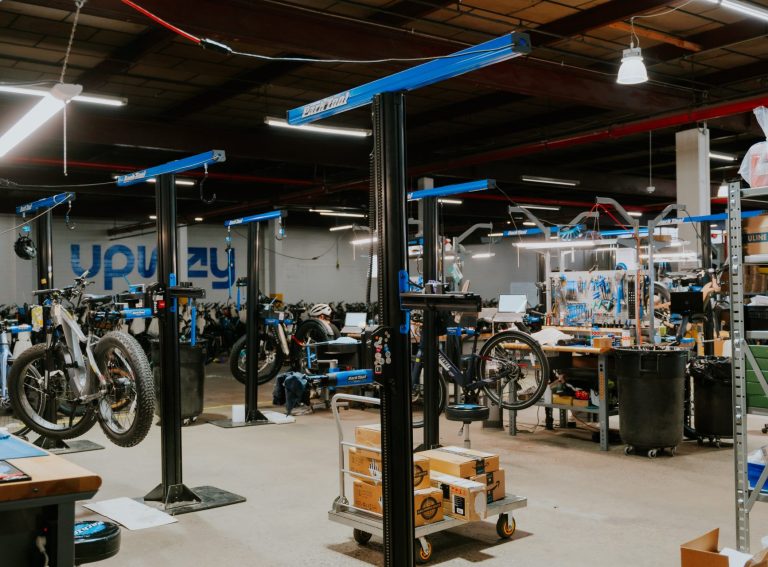Alessandro Felici believes he has bucked the micromobility trend from the very beginning.
Felici is the CEO and Founder of Milan-based RideMovi which is the market leading micromobility player in Italy, where it operates more than half its 35,000-strong fleet of bikes, e-bikes and scooters.
The firm also runs hire schemes in Spain, Portugal, Greece, Germany, Ireland, Sweden and Denmark, with a presence in 40 cities across Europe.
“The key to our success in becoming profitable is that we invested to learn while others invested to grow,” RideMovi’s CEO and Founder Alessandro Felici tells Zag Daily.
“Making micromobility available and affordable to everyone is our central mission, and this is dependent on building a great service that works – not just growing your stock price.”
Innovative from the start
RideMovi was officially born in 2019, but its origins date back to 2017 when Felici first started licencing Mobike owned bikes and making them available for hire. This was before the micromobility boom in Europe had really taken off giving the operator a competitive foothold.
“Micromobility is a really affordable way of commuting in cities and I saw its future potential,” Felici recalls.
Mass interest in shared micromobility really began in Asia, before spreading over to Europe and the US. Firms quickly popped up all over the place and began raising huge amounts of capital.
“Operators were selling investors on the idea of becoming the leader of this new industry before they had even fixed the basics,” Felici says.
“And now many of these companies have either gone bankrupt or are still struggling to make a profit.”
Felici explains that RideMovi operates in a similar way to a retail or logistics business in the sense that its success is dependent on the combination of numerous variables i.e. hardware, software, supply chain and operations.
“Our margin comes by controlling and improving the efficiency of every element of the value chain,” he explains.
“From designing durable, comfortable vehicles with low maintenance, to fully integrating operations and supply chain in our systems, to continuously improving operational efficiency.”
RideMovi says it was the first operator to introduce swappable batteries in 2019, while it was also the first to offer mechanical bikes, e-bikes and e-scooters.
And this approach has been justified over time. RideMovi first reported positive EBITDA in 2019 and achieved positive EBIT in 2022.
“We continue to have a lean structure with around 20 people employed at our headquarters,” Felici says.
“Around 30 people would probably be perfect, but we want to keep costs down so money can be reinvested into our service. I don’t understand why some of our rivals employ so many people in their head offices. In my view, general and administrative (G&A) expenses should be less than 20% of revenues.”
Residents first, tourists second
A core aspect to the RideMovi model is providing affordable journeys for residents, rather than targeting tourists with high prices.
“Tourists have a low sensitivity to price and you can charge a lot of money for short trips,” Felici explains.
“But you will never be able to expand your fleet or become a first and last mile operator running this model because you will be totally dependent on tourists.”
By eschewing this model, RideMovi has been able to expand its fleets to cover entire cities, often with 10 to 15 vehicles per 1,000 inhabitants.
“Our pricing is comparable to public transport, whereas schemes that target tourists are similar to taxi prices,” says Felici.
“There are some cities where we have operated since 2017, and still in 2024 we are experiencing 30% growth.”
RideMovi also offers a subscription service enabling more frequent users of its devices discounts on the pay as you go rate. According to Felici, 70% of the operator’s revenue is now coming from subscribers, many of whom are paying less than the price of a bus ticket per journey.
“We offer all the packages of our competitors, plus we offer our own packages which are more attractive,” he adds.
“This is also why we offer three types of vehicle – we want to cater to as many people as possible and meet their needs.”
Utilisation is key
Despite the fact that RideMovi is offering far cheaper rides than its competitors in most cities, it still delivers margins of above 55% on 70% of its vehicles.
“Many of our competitors sold their model on very high margin expectations that would not be sustainable in a highly competitive and regulated industry,” Felici explains.
“The combination of fair pricing, widespread coverage and high levels of utilisation means that our margins are twice as high as our rivals. Three trips at 1.5 euros delivers a higher margin than one trip at 3 euros. High utilisation helps increase the fleet in a sustainable way.”
Based on data collected by RideMovi, Felici estimates that it has one of the highest utilisation rates among all operators in Europe. For example, in Florence and Bologna it has an average utilisation of 3 trips per day, whereas the industry average is 1.3.
“Across the two cities we serve 600,000 inhabitants with 10,000 vehicles, which is the highest density in Europe,” he says.
Felici adds that having a strong understanding of the cities in which you operate is really important, as it allows the operator to control and improve the efficiency of operations and the service quality.
“Operational excellence and local knowledge are the most important determinants of success, even more than technology and hardware quality,” he argues.
“Everyone can purchase the best technology or the best scooter – efficiency and service quality is what sets us apart.”





